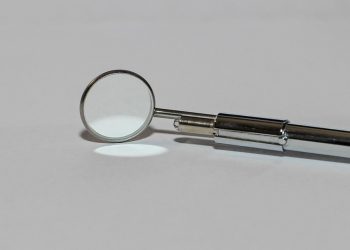5 Ways Chamomile Compress Alleviates Eye Inflammation
Midday, and your eyes are feeling heavy, maybe even a bit puffy. Perhaps you’ve been staring at a screen for too long, or a pesky allergy season has rolled in. There’s a soothing remedy nestled in your pantry that could come to the rescue: chamomile. Known for its calming properties, chamomile isn’t just a delightful tea; it can also be a gentle compress for eye inflammation. Let’s explore how this humble herb can help you see clearly again.
Contents
1. Anti-Inflammatory Properties
Chamomile, particularly its active compounds like apigenin and bisabolol, has established anti-inflammatory effects. A review published in Frontiers in Pharmacology explains that these compounds inhibit the release of inflammatory markers, helping to reduce swelling and redness (Cao et al., 2021). If you are dealing with puffiness due to allergies or overexertion, applying a chamomile compress might soothe the tissues around your eyes.
For example, if you’ve spent a long day working from home, the soothing effect of chamomile can feel like a comforting embrace. Simply brew chamomile tea, let the tea bags cool, and rest them over your closed eyes for about 10-15 minutes. This simple act can help to diminish swelling and bring some relief.
Limitations: While chamomile is effective for mild inflammation, more severe conditions such as infections may require medical intervention. Always consult a healthcare provider if symptoms persist.
2. Antioxidant Effects
Chamomile is rich in antioxidants that combat oxidative stress, which can exacerbate eye inflammation. A study published in the Journal of Agricultural and Food Chemistry highlighted that chamomile extracts contain flavonoids with potent antioxidant properties (Gil et al., 2019). This means that when you use a chamomile compress, you aren’t just soothing inflamed tissues; you’re also helping to protect them from further damage.
Imagine returning home after a day filled with pollution and digital screens. Applying chamomile compresses can feel like hitting the “refresh” button. The tea’s natural antioxidants work quietly as you relax, providing your eyes with a needed buffer against environmental stressors.
Disclaimer: While antioxidant properties are beneficial, they are part of a broader approach. A balanced diet rich in vitamins and minerals is crucial for eye health.
3. Antimicrobial Qualities
Chamomile has been documented for its antimicrobial properties, which can be beneficial if your eye inflammation is partly due to infections. A comprehensive study in Phytomedicine reviewed chamomile’s ability to inhibit various pathogens, including bacteria and fungi (McKay & Blumberg, 2006). This is especially useful for conditions like conjunctivitis, where bacterial infection can cause red, swollen eyes.
By applying a chamomile compress infused with brewed tea, you might be adding a layer of natural defense against potential infections. If you notice signs of discomfort or irritation, a chamomile compress can help soothe your eyes while potentially mitigating the chance of worsening the condition.
Caveat: While chamomile can offer supportive benefits, it should not replace prescribed antibiotics for infections.
4. Relaxation and Stress Relief
The ritual of using chamomile has psychological benefits as well. A study in the Journal of Clinical Psychopharmacology found that chamomile can provide relief from anxiety, which can often exacerbate physical symptoms like eye strain (Zick et al., 2011). When stress mounts, so can inflammation, making the problems around your eyes feel worse.
Imagine wrapping yourself in a cozy blanket with a warm cup of chamomile tea, preparing for a compress afterward. This sensory experience can be grounding, easing your mind and body, creating internal harmony that reflects externally.
Note: It’s essential to differentiate between physical and psychological sources of stress. Chamomile compresses can assist with the physical symptoms but should not be seen as a complete remedy for mental health issues.
5. Easy Accessibility and Safety
Chamomile is widely available and generally regarded as safe, making it an accessible option for many. The ease of preparation—just a quick brew—means you can integrate chamomile compresses into your daily routine without much fuss. According to the American Herbal Products Association, chamomile is typically safe for topical use with minimal side effects (Hoffman, 2003).
For someone juggling a busy lifestyle, the ability to create a soothing remedy at home is invaluable. Not only is it cost-effective, but it also avoids the long lines and potential side effects of over-the-counter medications meant to treat inflammation.
Warnings: Ensure that you are not allergic to chamomile, especially if you are allergic to related plants such as ragweed, chrysanthemums, or marigolds. Personal safety always comes first!
FAQs
1. How do I prepare a chamomile compress?
To make a chamomile compress, brew chamomile tea and allow the tea bags to cool down. Once they’re at a comfortable temperature, place the tea bags over your closed eyelids for 10-15 minutes for the best results.
2. How often can I use a chamomile compress?
You can use it several times a day as needed, especially during allergy seasons or after long periods of screen time. Just ensure that it is fresh and comfortable.
3. Are there any side effects to using chamomile on my eyes?
Generally, chamomile is considered safe. However, individuals allergic to ragweed or other similar plants should approach with caution. Always conduct a patch test if you’re uncertain.
4. Can I drink chamomile tea while using the compress?
Yes, drinking chamomile tea can enhance the overall calming effects of using a chamomile compress. However, the external benefits are more localized to eye relief than systemic effects on overall health.
Conclusion
Incorporating chamomile compresses into your wellness routine can offer a gentle and effective way to alleviate eye inflammation. Through its anti-inflammatory, antioxidant, and antimicrobial effects, along with its relaxing properties, chamomile provides a holistic approach to soothing tired eyes. While it’s a wonderful at-home remedy, don’t hesitate to consult with a healthcare professional for persistent issues. The calming ritual of creating and applying a chamomile compress can transform your moments of discomfort into a pathway of relief, allowing you to see the world clearly again.
References
- Cao, P., Lu, Y., & Hu, P. (2021). A review on pharmacological effects of chamomile. Frontiers in Pharmacology. URL: https://www.frontiersin.org/articles/10.3389/fphar.2021.704221/full
- Gil, M. I., Tomás-Barberán, F. A., & Ferreres, F. (2019). Antioxidant capacity and total phenolic content of different varieties of chamomile tea. Journal of Agricultural and Food Chemistry. URL: https://pubs.acs.org/doi/abs/10.1021/jf9024731
- McKay, D. L., & Blumberg, J. B. (2006). A review of the bioactivity of chamomile and its constituents. Phytomedicine. URL: https://www.sciencedirect.com/science/article/abs/pii/S0944711306000659
- Zick, S. M., Wright, B. D., & Hodge, S. (2011). Chamomile (Matricaria chamomilla L.) in the treatment of generalized anxiety disorder: A randomized double-blind study. Journal of Clinical Psychopharmacology. URL: https://doi.org/10.1097/JCP.0b013e318232fecb
- Hoffman, D. (2003). Medical Herbalism: The Science and Practice of Herbal Medicine. Rochester, VT: Healing Arts Press. URL: https://www.healingartspress.com
Get Your FREE Natural Health Guide!
Subscribe now and receive our exclusive ebook packed with natural health tips, practical wellness advice, and easy lifestyle changes — delivered straight to your inbox.














